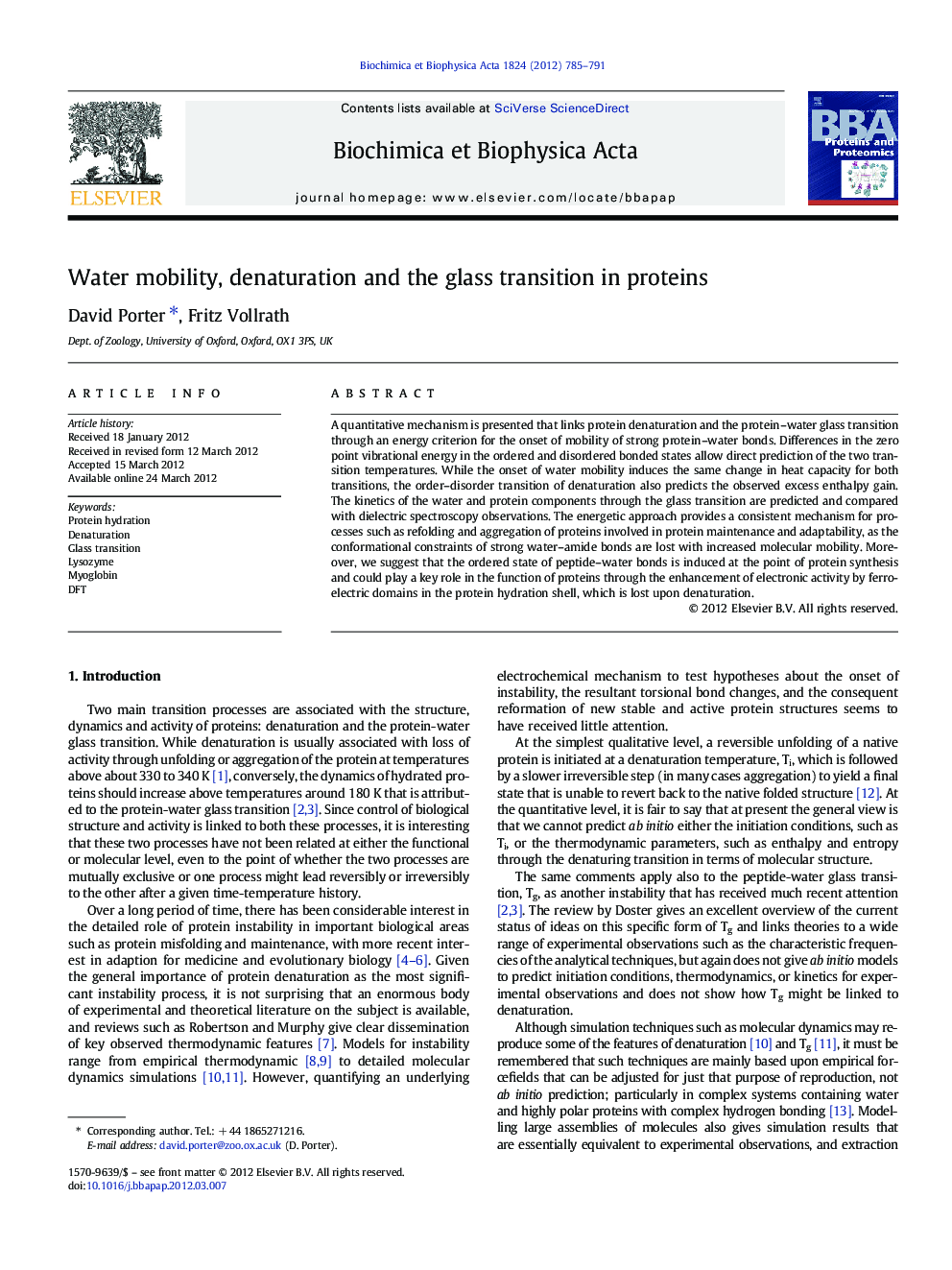| Article ID | Journal | Published Year | Pages | File Type |
|---|---|---|---|---|
| 1178681 | Biochimica et Biophysica Acta (BBA) - Proteins and Proteomics | 2012 | 7 Pages |
A quantitative mechanism is presented that links protein denaturation and the protein–water glass transition through an energy criterion for the onset of mobility of strong protein–water bonds. Differences in the zero point vibrational energy in the ordered and disordered bonded states allow direct prediction of the two transition temperatures. While the onset of water mobility induces the same change in heat capacity for both transitions, the order–disorder transition of denaturation also predicts the observed excess enthalpy gain. The kinetics of the water and protein components through the glass transition are predicted and compared with dielectric spectroscopy observations. The energetic approach provides a consistent mechanism for processes such as refolding and aggregation of proteins involved in protein maintenance and adaptability, as the conformational constraints of strong water–amide bonds are lost with increased molecular mobility. Moreover, we suggest that the ordered state of peptide–water bonds is induced at the point of protein synthesis and could play a key role in the function of proteins through the enhancement of electronic activity by ferroelectric domains in the protein hydration shell, which is lost upon denaturation.
► Denaturation and the protein–water glass transition are linked quantitatively. ► The instability transitions have the same elastic instability criterion in energy. ► The transitions are different in their zero point vibrational energy. ► The transitions are predicted ab initio using density functional theory. ► Thermodynamics and kinetics of the transitions are predicted.
